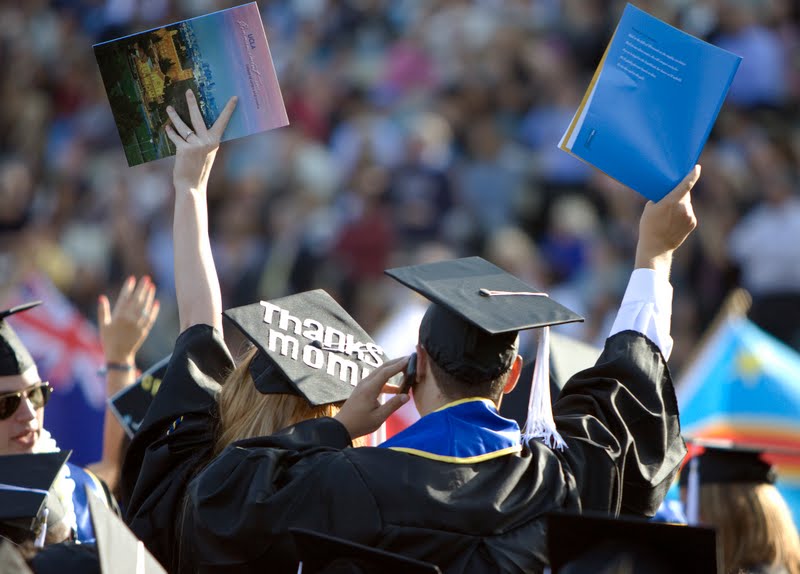Capstone program can improve student engagement with professors, academia before graduating

In a Chronicle of Higher Education article, Judith Smith, dean and vice provost for undergraduate education, stated that UCLA students are able to “walk through” their majors. UCLA’s Capstone Initiative aims to establish a culminating academic experience within majors, which students would complete before graduating.
By Charley Guptill
Aug. 5, 2012 11:33 p.m.
“Pedestrian” is not a word normally associated with the academic path of a UCLA student.
Judith Smith, dean and vice provost for undergraduate education, recently stated in a Chronicle of Higher Education article that some students are able to “walk through” their majors. It’s no secret that many students fail to engage with professors and remain anonymous in the back rows of lecture halls.
But a solution exists that Smith discussed at length in the same article ““ the Capstone Initiative. The Chronicle of Higher Education’s discussion of this initiative merits consideration in this column.
Launched about five years ago, capstone major requirements are UCLA’s first step in fostering student-faculty interaction on a scale usually seen only on small liberal arts campuses.
Under the initiative, which is in the process of implementation, students work with faculty to formulate a project that synthesizes the material absorbed up to that point at UCLA.
Capstones are an effort to address problems inherent in a large research university, where classes can be unwieldy, faculty interaction must be specifically sought out, and a college education can become an easy ride.
It’s unclear who’s to blame for these issues ““ students, professors, or departments and curricula? The truth is, it is harder to diagnose the root of the problem than to implement a solution, such as capstones, that can have a real effect in improving educational quality.
Right now, resources exist for students to complete a senior project or write a thesis in many majors, but students may not be required to do so. The Capstone Initiative changes that.
Capstone projects vary in intensity and method: They can include papers, seminars or portfolios done either individually or in small groups, depending on the academic subject and the feasibility of projects given the faculty’s resources.
Now that the program has been in motion for five years, where does it stand?
The program has yet to hit its full stride. Fewer than half of UCLA’s majors are capstone-certified, and how to allocate faculty resources is still being investigated. The initiative’s goal is for all academic departments to implement some sort of capstone program by UCLA’s centennial in 2019.
Looking forward to this benchmark, it is clear the program has its obstacles, the most glaring being UCLA’s overgrown population. Even if the school states its support for principles of critical thinking and the creation of knowledge, its size proves to be the largest barrier for school-wide implementation of these programs.
At UCLA, student-to-faculty ratios are on the high end. And faculty can be heavily involved in research and graduate programs, both of which have incredible merit in giving the school its competitive edge. But for capstones to work properly, the role of faculty members might have to be re-imagined to further emphasize the undergraduate experience.
After all, the certification process for each major requires that faculty and academic staff work creatively to establish an engaging and high-caliber program with the department’s existing resources, a time-consuming process.
It is important to remember that this program cannot blossom overnight. Smith, along with other staff members, capstone-certify as many as 20 majors a year. As of now, more than 50 majors at UCLA are capstone-certified already.
“The whole process has been slow and deliberate,” said Jennifer Lindholm, director of Learning Assessment and Special Projects at UCLA. “Change is challenging. … You have to be very innovative.”
If the program unfolds and spreads, UCLA could see itself become a new kind of research university with a level of student engagement previously thought only achievable at much smaller universities.
Both students and professors need to be passionate about instituting such a program. For students, it means paying attention to the projects their peers complete, and for professors it is about placing a high priority on personal connection with undergraduates on par with research and graduate programs.
This mutual passion for learning and creation will fuel capstones’ implementation. If the program advances as planned, UCLA might redefine itself as a school with the variety and diversity of a world-class research institution that also dedicates attention to individuals like a smaller liberal arts school.
Capstone projects, besides being intellectually engaging, offer students an experience that can influence their lives down the road.
“Doing a senior thesis got me interested in working in academia,” Lindholm said.
Lindholm said she believes capstones will open doors for new careers and even help students pin down what type of work they find personally relevant.
While capstones are being implemented, it is up to students to find their own opportunities to work closely with professors on broad projects.
Students without a capstone requirement in their department can still pursue honors contract projects or take the initiative to get involved in a professor’s research. Learning to thrive in a large university and shape an education for yourself is a valuable lesson in itself.
Email Guptill at [email protected]. Send general comments to [email protected] or tweet us @DBOpinion.

